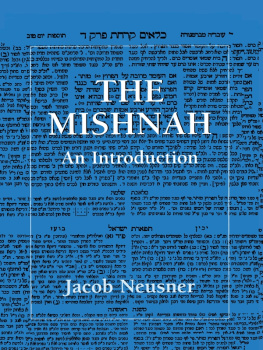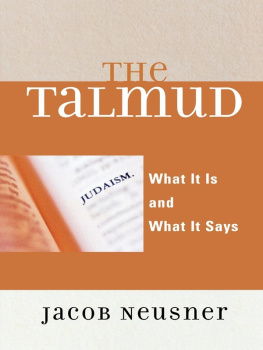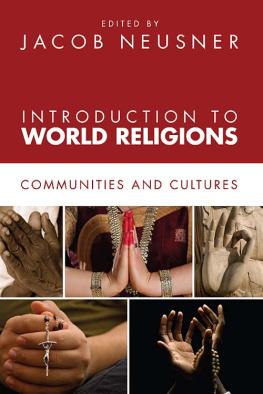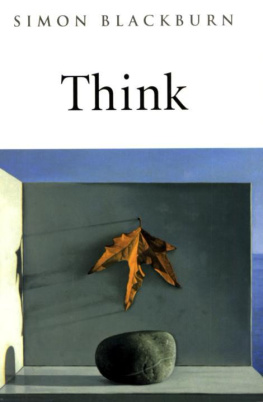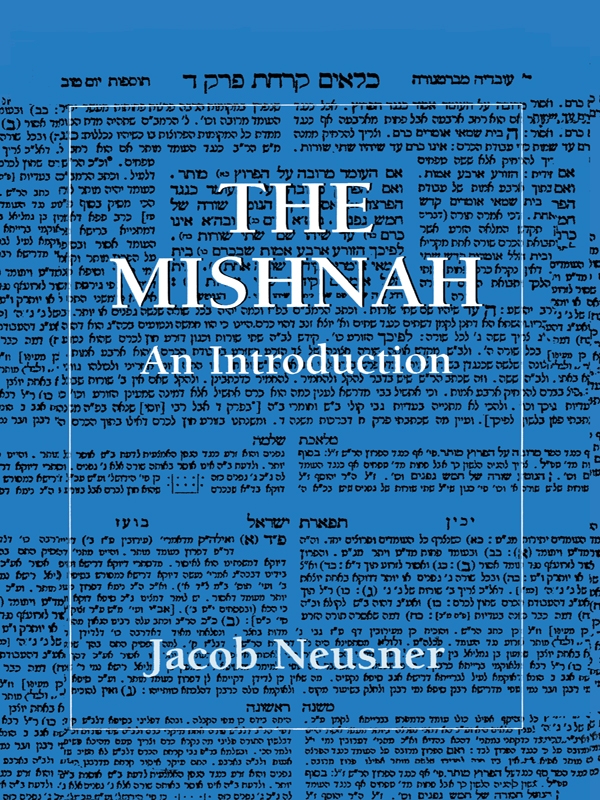Jacob Neusner - The Mishnah: An Introduction
Here you can read online Jacob Neusner - The Mishnah: An Introduction full text of the book (entire story) in english for free. Download pdf and epub, get meaning, cover and reviews about this ebook. year: 1988, publisher: Jason Aronson, Inc., genre: Romance novel. Description of the work, (preface) as well as reviews are available. Best literature library LitArk.com created for fans of good reading and offers a wide selection of genres:
Romance novel
Science fiction
Adventure
Detective
Science
History
Home and family
Prose
Art
Politics
Computer
Non-fiction
Religion
Business
Children
Humor
Choose a favorite category and find really read worthwhile books. Enjoy immersion in the world of imagination, feel the emotions of the characters or learn something new for yourself, make an fascinating discovery.
- Book:The Mishnah: An Introduction
- Author:
- Publisher:Jason Aronson, Inc.
- Genre:
- Year:1988
- Rating:3 / 5
- Favourites:Add to favourites
- Your mark:
The Mishnah: An Introduction: summary, description and annotation
We offer to read an annotation, description, summary or preface (depends on what the author of the book "The Mishnah: An Introduction" wrote himself). If you haven't found the necessary information about the book — write in the comments, we will try to find it.
How do you read a book that does not identify its author, tell you where it comes from, or explain why it was written a book without a preface? And how do you identify a book with neither a beginning nor end, lacking table of contents and title? The answer is you just begin and let the author of the book lead you by paying attention to the information that the author does give, to the signals that the writer sets out.
As Neusner goes on to explain, the Mishnah portrays the world in a special way, in a kind of code that makes it a difficult work for the modern reader to understand. Without knowing how to decode the Mishnah, we may read its works without receiving its message.
Neusner, one of the worlds foremost Mishnaic scholars, demonstrated that the Mishnahs own internal logic and structure form a solid foundation on which to build an understanding of this vitally important Jewish work. Using examples of how the Mishnahs language, logic, and discourse associate and categorize behaviors, events, and objects, Neusner opens the Mishnah to readers who would not otherwise be able to grasp its most fundamental concepts.
Since the Mishnah forms the basis of both the Babylonian and the Palestinian Talmuds (which are, in Neusners elegant terms, the core curriculum of Judaism as a living religion), study of the Mishnah is essential to an understanding of Judaism. Drawing on his own new translation of the Mishnah and displaying the enthusiastic dedication that has sparked a whole new body of Mishnaic research, Neusner allows readers with no previous background to join Jews who have studied, analyzed, and delighted in the wisdom of Mishnah for centuries.
In addition to giving us a thorough exploration of the Mishnahs language, contents, organization, and inner logic, Neusner also provides us with a broad understanding of how it communicated its own world view its vision of both the concrete an spiritual worlds. The Mishnah: An Introduction gives us a tour of this sacred Jewish text, shedding light on its many facets from its view of life to its conception of God and His relation to our world.
Jacob Neusner: author's other books
Who wrote The Mishnah: An Introduction? Find out the surname, the name of the author of the book and a list of all author's works by series.

